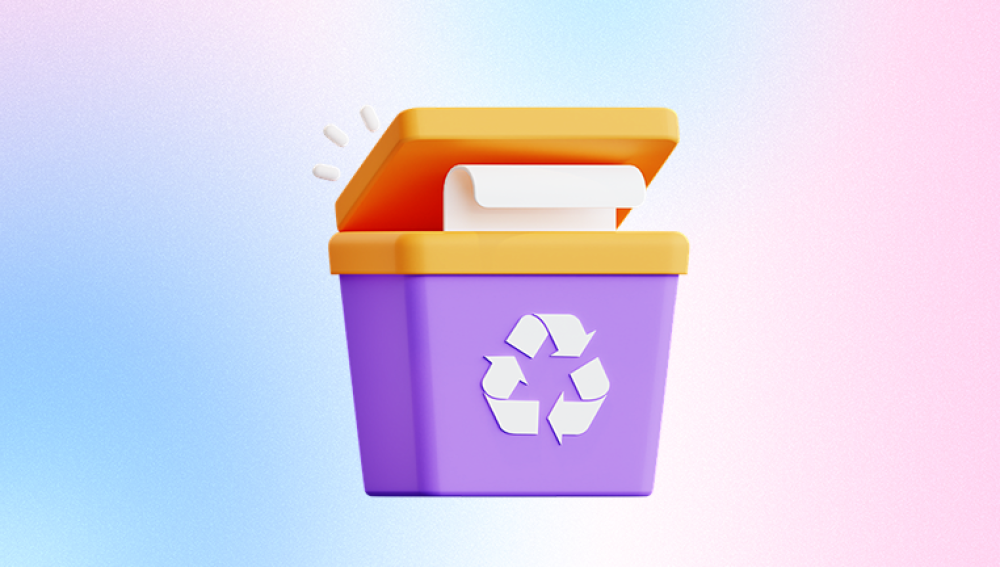Understanding what happens to files after deletion and how they can be recovered requires insight into how modern file systems operate, the mechanics of data deletion, and the tools available for recovery.
What Happens When Files are Deleted?
Initial Deletion
When a file is first deleted from a folder on a typical operating system like Windows, it doesn't get removed from the storage device immediately. Instead, it is moved to the Recycle Bin, a temporary holding space. The purpose of this feature is to offer users a way to recover files that were deleted by mistake. The file remains fully intact in this space and can be restored with just a few clicks.
Emptying the Recycle Bin
Once a file is sent to the Recycle Bin and subsequently removed (i.e., the Recycle Bin is emptied), the operating system doesn't erase the file data itself. Instead, it marks the space occupied by that file on the storage device as available for new data. The file entry is removed from the system’s index of files, but the actual data clusters, the part of the drive where the file resides, remain untouched. In this state, the file is technically still recoverable, but the system views the storage space as available.

Overwriting
The reason people often think files are “gone forever” after being deleted from the Recycle Bin is that once the system overwrites the file's data clusters with new data, the file becomes much harder to recover. The more the computer is used after a file has been deleted, the higher the chance that the file's data will be overwritten.
Overwriting is the process by which the file system writes new data in the location previously occupied by the deleted file. When this happens, the original file becomes partially or completely unrecoverable, depending on how much of the data has been overwritten. However, if the data clusters remain untouched, the file can still be restored using special recovery techniques.
File Systems and Deletion
Different file systems handle deletion in slightly different ways, but the core concept remains the same: deletion marks the file’s storage space as available without actually wiping the data. Understanding the specifics of file systems is crucial for understanding how recovery works.
FAT and NTFS File Systems
Windows primarily uses two types of file systems: FAT (File Allocation Table) and NTFS (New Technology File System). In both systems, when a file is deleted from the Recycle Bin, its directory entry is removed, but the file's data remains on the disk until new data overwrites it.
FAT: When files are deleted in a FAT file system, the first character of the file name is replaced with a special character, signaling that the space can be reused. The data remains in place until overwritten.
NTFS: In NTFS, deletion is slightly more complex due to its use of the Master File Table (MFT). The MFT entry for the file is marked as deleted, and the file’s data is flagged as free space, but the data itself remains intact until overwritten.
SSDs and TRIM
Solid-State Drives (SSDs) complicate the picture further due to the way they handle deleted data. Most modern SSDs use a feature called TRIM, which tells the SSD to immediately wipe the space occupied by deleted files. This process happens almost instantly when the file is deleted, making data recovery from an SSD significantly more difficult compared to traditional hard drives. With TRIM enabled, once a file is deleted from the Recycle Bin, its data is essentially gone forever, as the SSD proactively clears the space.
Data Recovery Techniques
Even though files aren’t immediately erased after being deleted from the Recycle Bin, recovering them can become challenging over time, especially if new data has been written to the disk. However, several techniques and tools can help in the recovery process.
Data Recovery Software
A variety of software tools are available for recovering files that have been deleted from the Recycle Bin. These tools scan the drive for data clusters that still contain the remnants of deleted files. If the clusters haven't been overwritten, the software can reconstruct the file and restore it to a usable state. Examples of popular data recovery software include:
Recuva: A user-friendly tool that allows the recovery of deleted files from a variety of storage devices.
EaseUS Data Recovery Wizard: Another comprehensive tool that offers file recovery for a wide range of scenarios, including emptied Recycle Bins.
Disk Drill: Known for its deep scanning capabilities, Disk Drill is a reliable choice for recovering lost files from hard drives, SSDs, and other devices.
Most recovery software tools work by identifying the files' signatures left behind in the file system. Since these tools look for specific patterns in the file structure, they can often recover files even if they’ve been deleted months or even years earlier, as long as the data hasn't been overwritten.
Professional Data Recovery Services
In cases where software solutions fail—such as when data clusters have been partially overwritten or the storage device is damaged—professional data recovery services can be an option. These services employ advanced techniques like examining the physical structure of hard drives or using specialized equipment to recover data. While costly, professional services can often retrieve data that would otherwise be considered lost.
Manual Recovery Methods
For technically savvy users, manual recovery methods, such as using command-line tools, might be another approach. These tools can scan the storage device and attempt to restore deleted files directly from the device’s file system. While powerful, manual methods are not recommended for beginners, as improper use can lead to further data loss.
Misconceptions about Data Deletion
One of the biggest misconceptions about file deletion is the idea that once a file is deleted from the Recycle Bin, it is completely erased from the storage device. In reality, deletion is more about signaling to the system that the file’s space can be reused. Until the system writes new data to that space, the original file remains on the device.
Misconception 1: Deletion Equals Erasure
Many people believe that emptying the Recycle Bin is equivalent to erasing a file. However, as previously discussed, deletion only removes the file’s entry from the file system. The data is still present on the drive and can often be recovered.
Misconception 2: Overwritten Files Can Be Easily Recovered
While it's possible to recover files after deletion, the process becomes much more difficult if the file has been overwritten. Some people think overwritten files can be easily restored, but in practice, recovery becomes increasingly complex and less likely as more data is written to the drive.
Misconception 3: SSDs and HDDs Handle Deletion Similarly
Many users assume that SSDs handle deletion in the same way as traditional hard drives, but as mentioned earlier, SSDs with TRIM enabled actively erase data after deletion. This makes recovery from SSDs much harder than from hard drives.
Preventing Data Loss
To avoid losing important files, several preventive measures can be taken.
Regular Backups
One of the most effective ways to prevent permanent data loss is by regularly backing up important files. This can be done through cloud services like Google Drive or OneDrive, or by using external hard drives. Backups ensure that even if files are accidentally deleted, there is a copy available elsewhere.
File Versioning
Many cloud storage systems, such as Dropbox and Google Drive, offer file versioning. This feature allows users to restore previous versions of files, making it possible to recover data even if the current version of a file has been deleted or overwritten.
Data Recovery Software Installation
Having reliable data recovery software installed and ready to use is another safeguard against data loss. This ensures that in case of accidental deletion, the software can quickly be used to scan the storage device for recoverable files.




